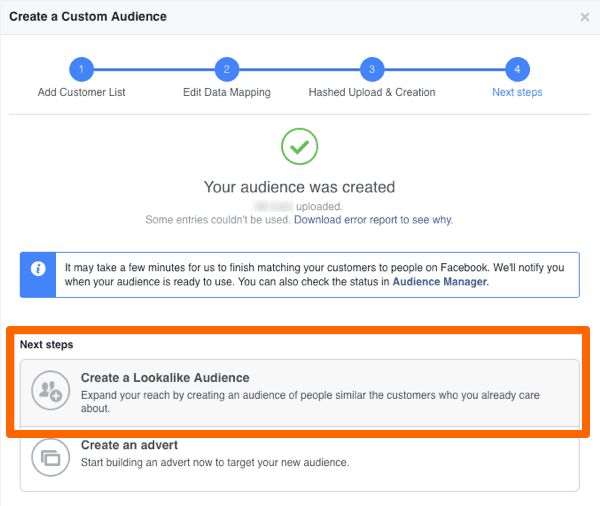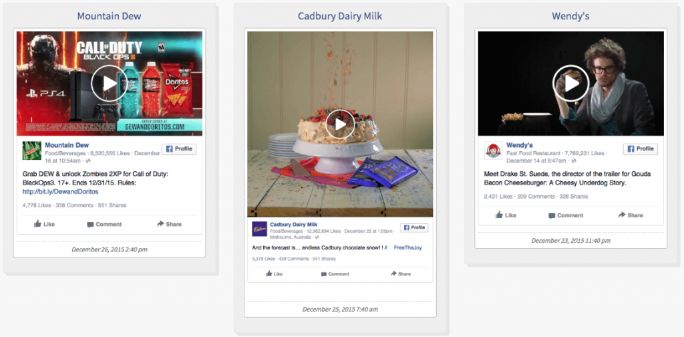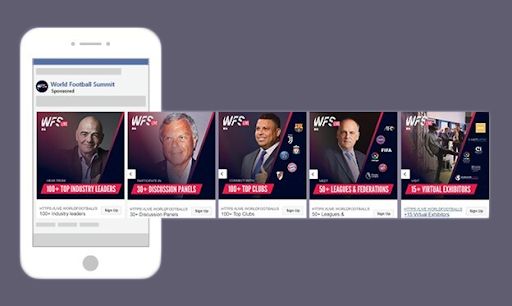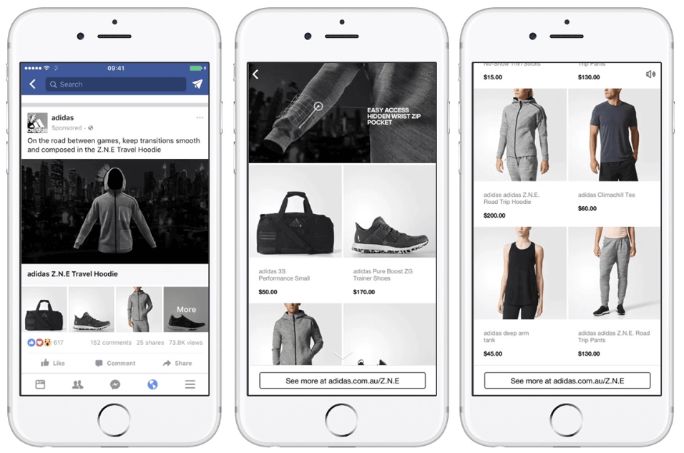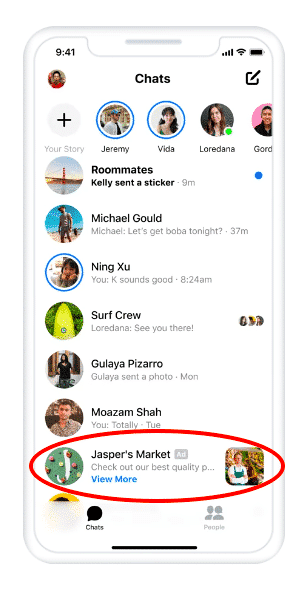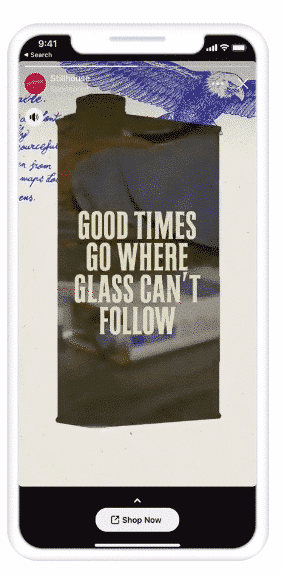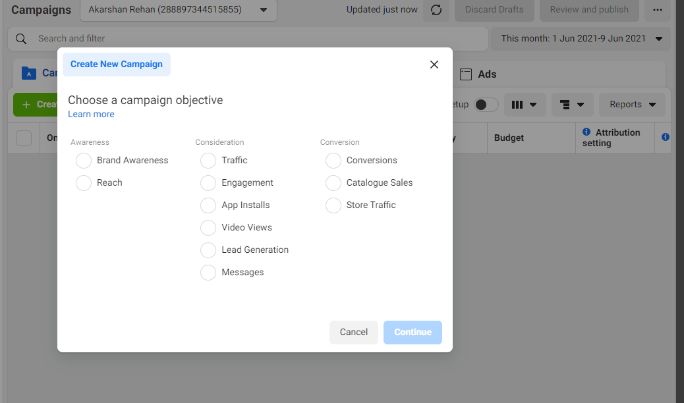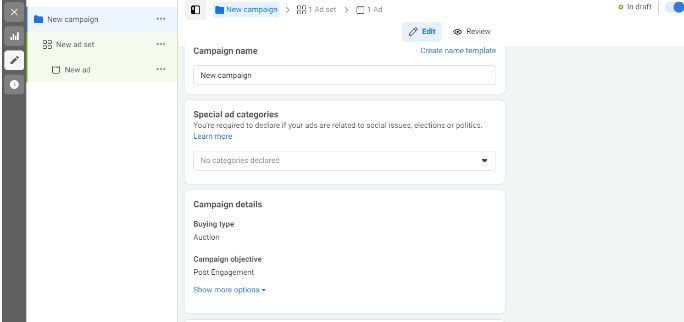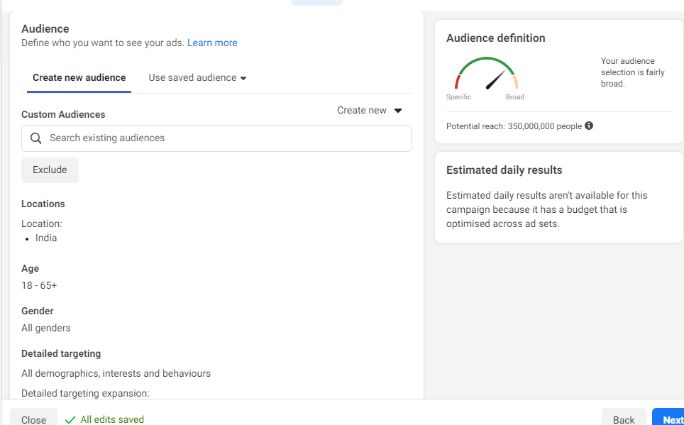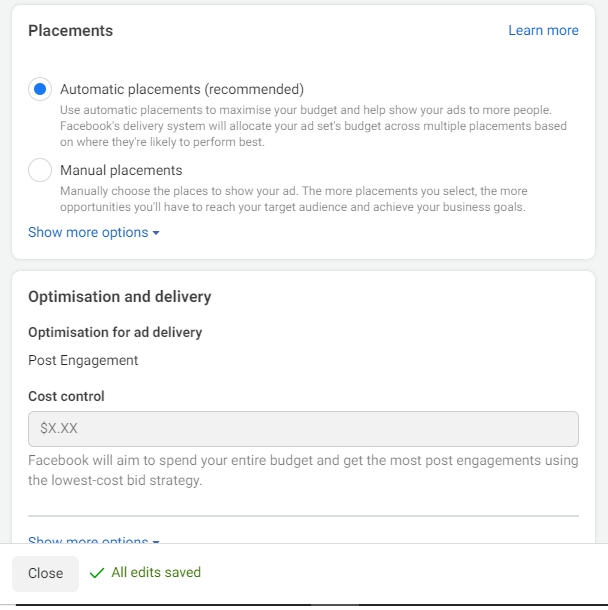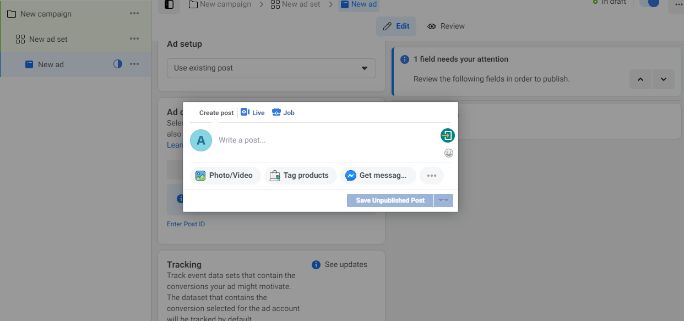If you don’t want to wait months for SEO to kick in, there’s no better and powerful option than using Facebook ads.
Facebook ad platform offers:
- 6 primary ad formats
- 1300+ targeting options
- 11 main objectives
Just imagine the capability of this incredible ad platform.
And according to Statista, with over 3 billion monthly active users, there’s a good chance that a significant portion of your target audience is already on Facebook.
So why would you miss this golden shot to give an immense boost to your business?
But to make the optimum use of Ads, you need to be crystal clear about the basics and how to run your ad campaign.
Here’s a complete guide to help you become a master, even if you are just a beginner.
Why Spend Money on Facebook Ads?
Facebook’s scale is far larger than that. WARC Media reported Facebook’s global advertising revenue surpassed $100 billion in 2024, underscoring how massive its ads business became.
Businesses and marketers across the globe are using Facebook to boost their profits and enjoy hefty returns on their investments.
Want to know why they are choosing Facebook over any other ad platform?
Granular Targeting
Highly specific targeting is probably the USP of the Facebook ad platform. You won’t find such a wide variety of targeting options on any other ad platform out there.
Based on people’s behavior, interests, demographics, connections, age groups, languages, and locations, you can filter out your target audience and show ads to them.
There is another plus point here with the targeting option; you can escape all the hard work of audience research and select your competitors’ followers directly to run your ads.
Isn’t it amazing?
Apart from precise targeting, marketers also use Ads for their accurate analytics.
Powerful Analytics
If you are running your ads on Facebook, it will ensure that it brings you all the data related to your ad’s performance.
You can use valuable metrics like page likes, post engagements, clicks, CPC, and reach during a selected time period.
You can use Facebook analytics to optimize your ad campaign and figure out what’s working and what’s not. They help you understand how people are reacting to your ads, what you should do to optimize and boost conversions, etc.
Lookalike Audience
With powerful targeting and analytics, the Facebook ad platform is also famous for gaining new leads. How? With the magic of Facebook’s AI-based Machine Learning algorithm.
Once you run your ads for your target audience and find a set of audiences that converted to leads, Facebook’s algorithm will help you find more people with similar interests to those who converted.
These are some of the significant benefits that make marketers use the Facebook ad platform for their business growth.
If you also want to step into their shoes of success with Facebook ads, be clear of two things before you start anything:
- Your goals
- How do you want your ad to look?
Answering these questions will help you pick the suitable ad format available on Facebook, and will help you achieve your goals with the right ad objective.
Talking about ad formats, here is a list of six main ad formats you can choose from on Facebook:
Different Ad Formats on Facebook
Image Ads
Image ads are always an excellent way to kick-start your Facebook paid advertising. You need to keep it simple but attractive.
Your image ad should catch the attention of a Facebook user scrolling through their social feed. It should be attractive enough to do that and informative enough to make the user act on your CTA.
You need to be selective with the colors, text, or layout of your image. It can be a major deciding factor for your conversions.
Like in the example below, they have created an attractive image using text and graphics to attract their target audience.
But there are certain limits that you need to take care of in an image ad to get it approved by the Facebook algorithm. Here are certain Facebook image ad specifications important for a Facebook photo ad. You can create ads with different motives, like Facebook political ads, Facebook business ads, and a lot more.
Design recommendations:
- Ratio: 1.91:1 to 1:1
- File type: PNG or JPG
- Resolution: At least 1080 x 1080 pix
Text recommendations:
- Headline: 40 characters
- Primary text: 125 characters
- Description: 30 characters
Technical requirements:
- Minimum width: 600 pix
- Maximum file size: 30 MB
- Aspect ratio tolerance: 3%
- Minimum height: 600 pix
Video Ads
Video ads are another ad format available on Facebook that can help you capture viewers’ attention by showcasing your product, a demo, or any other engaging content related to your business. For tips on creating high-performing videos, check out our guide on Facebook video ads.
Whether it’s video ads, image ads, or any other Facebook ad format, creativity is key. Facebook ads work as a demand-generation tool—you generate interest and attention through compelling content.
Here’s an example of popular brands using Facebook’s video ad feature to showcase their products and grab viewers’ attention, building awareness along the way.
Facebook has also listed some specifications related to video ads. If you want to run your ads effectively, you need to follow the specifications:
Design recommendations:
- File type: MOV, MP4 or GIF
- Video settings: H.264 compression, fixed frame rate, stereo, square pixels, and progressive scan
- Ratio: 4:5
- 128 kbps+ for AAC audio compression
- Video captions: Optional, but we recommend
- Resolution: At least 1080 x 1080 pix
- Video sound: Optional, but we recommend
Note: There should be no special boxes or edit lists in file containers.
Text recommendations:
- Primary text: 125 characters
- Description: 30 characters
- Headline: 40 characters
Technical requirements:
- Maximum file size: 4 GB
- Video duration: 1 sec to 241 min
- Minimum height: 120 pix
- Minimum width: 120 pix
Carousel Ads
If you want to use multiple photos or videos together in your ads, you need to select the carousel ads format. You will have the freedom to add up to 10 videos or images together to showcase your service or product.
Each video or image piece will have its own CTA where people can take a specific action on individual slides.
Here’s an excellent example of a carousel ad used by the World Football Summit. All the guest hosts are listed in each slide, and if a viewer is interested to hear any of these legends, they can click the ‘Sign Up’ button placed as a CTA.
Being one of the primary Facebook ad formats, you need to be careful with the specifications issued by Facebook for carousel ads if you want to get your ads approved.
Design recommendations:
- Video file type: MOV, MP4 or GIF
- Image file type: PNG or JPG
- Resolution: At least 1080 x 1080 pix
- Ratio: 1:1
Text recommendations:
- Headline: 40 characters
- Primary text: 125 characters
- Landing/Sales page URL: Required
- Description: 20 characters
Technical requirements:
- Image file size up to: 30 MB
- Number of carousel cards: 2 to 10
- Video file size up to: 4 GB
- Aspect ratio tolerance: 3%
- Video duration: 1 sec to 240 min
Collection Ads
Unlike the above three ad formats, collection ads are limited to mobile devices. People can view your collection of images and videos, and can directly click to buy your service or product.
You can also use collection ads to make your viewers buy your product, without making them leave the social media platform. Isn’t that great?
You need to put your focus on the primary video or photo. The other listed images or videos will work as a catalyst for your collection ad.
Here’s an example of Adidas using a collection ad format.
In this ad, they have used a video as their primary weapon for the ad, and then listed all the related products in the same range. Every product has its price tag listed, and a user can directly purchase through this ad. If you want some inspiration for your upcoming ads, you can explore the best Facebook ad examples by top brands.
There are certain specifications that you need to keep in mind when you decide to make use of collection ads.
Design recommendations:
- Image type: PNG or JPG
- Ratio: 1:1
- Video file type: MOV, MP4or GIF
- Resolution: At least 1080 x 1080 pixels
Text recommendations:
- Primary text: 125 characters
- Landing page URL: Required
- Headline: 40 characters
Technical requirements:
- Instant Experience: Required
- Video file size up to: 4 GB
- Image file size up to: 30 MB
Messenger Ads
All the above four main types of ad formats can be used on the Facebook feed, but when it comes to Messenger, there is a slight twist. 1.3 billion users access Messenger, and you can tap that audience just by choosing Messenger while placing your Facebook ad.
You can also use a normal Facebook ad and give a ‘Click to Messenger’ CTA to kickstart a conversation with your target audience on Messenger.
Here’s an example of a Messenger ad:
There will be a specific CTA displayed along with your ad placed in between different conversations a Messenger user has.
As you know that with Facebook ads, there are specifications you follow. Here are Messenger ad specs:
Text description:
- Body text: 125 characters
- Headline: 40 characters
Objectives fulfilled:
- Traffic
- Conversions
- Sales
- Messages
- Catalog
- App installs
Stories Ads
The last on the list is story ads. It’s a mobile-friendly video ad that can only be viewed in the stories feature of Facebook. You can place a CTA, which will be displayed at the bottom of the video ad.
Looking at the example below will make you completely understand how the ad looks and works:
You can clearly see that it’s a vertical full-screen video played in a Facebook story, and a viewer can take the desired action after seeing it.
Here are some specifications you need to follow:
Test description:
- No specified character count. You need to leave 250 pixels with no text at the top and bottom
Objective:
- It is suitable for all campaigns except store visits and engagements
- You can also contact the Ads support for any further assistance.
- Now that you know all the different ad formats, let’s create one for your business.
If you’re looking to master the process of setting up impactful Facebook ads—from choosing formats to targeting and visuals—our comprehensive guide on how to create Facebook ads walks you through it step-by-step.
Setting Up Your First Facebook Ads Campaign
Step 1. Objective Selection
To kick-start things, you need to click on the Facebook ad manager option, then under the campaigns section, click the ‘Create’ button.
A pop-up, like shown in the image below, will show up, and you have to select the campaign objective. As you already know that there are 11 primary objectives. Select one as per your goal and click on the ‘Continue’ button.
Step 2. Name the Campaign
Once you have selected your objective, name your ad campaign. You can see on the left side that a new ad set and new ad tabs are displayed. You can create multiple ad sets, and each ad set can have multiple ads running.
Step 3. Set A/B Testing and Your Budget
You also have the option of selecting A/B testing at the start. Click on the ‘Get Started’ button; then, you can create another version of your campaign for testing purposes. You also need to set up your budget daily or on a lifetime basis and schedule your ad by selecting a specific date and time.
Step 4. Select Your Target Audience
Based on the location, age, gender, language, interests, and behavior, you can select your audience. Facebook Audience Meter will help you figure out the potential reach and whether the selection of your audience is specific or broad.
Step 5. Choose Your Facebook Ad Placement
It’s better to go with automatic placements. But if you choose to select the manual options, you have multiple options to choose from, like different devices your ads need to be placed on, different platforms like Facebook, Audience Network, Instagram, or Messenger.
Step 6. Create Your Ad
Completing all the above steps will finalize your new ad set. Now it’s time to create your ad. You can create multiple ads within this ad set and run an A/B test to see which performs better.
For setting up your ad, you can choose an existing post, create a new one, or use a Creative Hub mockup. If you’re looking for inspiration or ready-to-use designs, explore our collection of Facebook ad templates to speed up the process.
We recommend creating a fresh post for your first ad campaign. After reviewing tracking options, click the Publish button to submit your request to Facebook and wait for approval.
Facebook Ads Best Practices For a Successful Ad Campaign
Effective Use of Facebook Pixel
Facebook pixel is your key to tracking conversions you’ll get from Facebook. It’s just a small code that you need to add to your website. You can use the results drawn using the pixel to re-target visitors and reach out to the warm audience again, to make multiple business impacts and hence, improve your conversion rates.
Adjust Ad Frequencies
It takes 7 to 8 business impressions for a new user to just remember your brand. You need to adjust your ad frequencies if you want to make optimum use of your ad campaigns. Also, adjust your budget accordingly because the more your ad shows up to the same viewer, the cost will also rise.
Testing is Winning
Without testing, you won’t be able to succeed with Facebook advertisements. You need to test everything: from your ad copies, CTA’s, ad titles, ad descriptions, ad timings, ad formats, to know what’s working and what’s not.
Tracking and Optimizing
Without analytics and accurate tracking, you can’t scale your ad campaign. Use Facebook ad analytics and other powerful analytics tools to know where you stand with your Facebook ad campaigns.
Follow all these practices to stand out from your rivals and master the art of running a successful ad campaign.
Conclusion
Facebook ads continue to be one of the most cost-effective and powerful tools for businesses to reach targeted audiences and drive measurable results. With constant algorithm improvements, the platform offers unparalleled opportunities to grow your customer base and maximize ROI—without breaking the bank.
To make the most of your campaigns, you need the right tools for planning, scheduling, tracking, and optimizing your ads. Explore SocialPilot’s plans and start your 14-day free trial to access advanced social media analytics, customer reports, and streamlined ad management—all in one platform.

